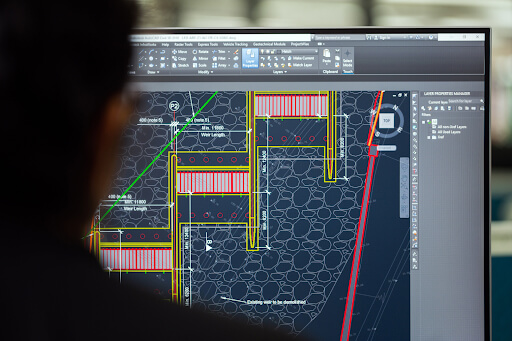Introduction to Micro Frontend Architecture: Scaling Frontend for Digital Innovation.

In today’s rapidly evolving digital landscape, businesses are constantly seeking innovative approaches to enhance the scalability, maintainability, and agility of their software systems. Traditional monolithic front-end architectures often fall short of meeting these demands. However, a rising paradigm, micro frontend architecture, offers a solution. In this article, we will explore the concept of micro frontend architecture, its benefits, implementation strategies, popular tools and frameworks, real-world use cases, challenges, and best practices.
What is Micro Frontend Architecture?
Micro frontend architecture is a strategy in which the traditionally monolithic frontend codebase is split into smaller apps, ideally addressing various business domains. These smaller elements form a seamless frontend interface that delivers a top-notch user experience and is easy to modify and scale. Micro frontend architecture draws inspiration from microservices, focusing specifically on the front-end layer. It involves breaking down a monolithic front-end application into smaller, loosely coupled, and independently deployable components.
Micro frontend architecture provides several benefits that address the limitations of monolithic front-end architectures. Let’s explore some of these benefits:
1. Independent Development and Deployment
Micro frontend architecture enables teams to develop and deploy components independently, reducing dependencies and bottlenecks. This leads to faster release cycles, improved time-to-market, and enhanced agility in responding to customer needs.
Read our in-depth guide to Agile development: Industry Analysis – [x]cube LABS
2. Enhanced Scalability and Maintainability
By decomposing a monolithic front-end application into smaller components, micro frontend architecture allows for targeted scalability. Each micro frontend can be scaled independently based on its specific requirements, ensuring optimal performance and a seamless user experience. Additionally, the modular nature of micro frontends makes maintenance simpler and more manageable.
3. Technology Flexibility and Polyglot Architecture
Micro frontend architecture embraces the diversity of technologies and frameworks. Each component can be built using the most suitable tools for its functionality, enabling teams to leverage their expertise and foster innovation. This polyglot architecture promotes flexibility and eliminates the limitations imposed by a single technology stack.
4. Improved Team Collaboration and Autonomy
Micro frontend architecture empowers teams to take ownership of specific components. This autonomy fosters faster decision-making, better code ownership, and increased collaboration within and across teams. By working on smaller, more manageable pieces, teams can achieve higher productivity and efficiency.
With these benefits in mind, it’s important to understand the implementation strategies and best practices for micro frontend architecture. Let’s delve into the details.
Watch our webinar on transitioning from Monolithic to Microservices and the benefits you can expect: Unlock the Future: Turbocharge Your Legacy Systems with Microservices!
Implementation Strategies for Micro Frontend Architecture
1. Composition at Build Time
Build-time composition involves assembling the various micro frontends into a single bundle during the build process. This approach requires careful coordination and adherence to shared design principles and contracts. It allows for optimized performance and reduced initial load times.
2. Composition at Run Time
Runtime composition involves loading and integrating micro frontends dynamically during runtime. This approach offers greater flexibility and allows on-demand loading, reducing initial load times and enabling independent updates of individual components. It provides a seamless user experience by loading only the necessary components when required.
3. Communication and Data Sharing Among Micro Frontends
Effective communication and data sharing between micro frontends are crucial for seamless integration. Techniques such as shared state management, event-driven architectures, and APIs can facilitate communication and ensure synchronized behavior. Implementing a consistent communication protocol is essential to maintain a cohesive user experience.
4. Routing and Navigation Approaches
Handling routing and navigation in a micro frontend architecture requires careful consideration. Approaches like URL routing, path-based routing, or a centralized router can help maintain a coherent user experience across different micro frontends. It’s important to ensure that users can navigate seamlessly between different views and components.
5. State Management Considerations
Managing shared state within a micro frontend architecture is essential for maintaining consistency and synchronization. Techniques like local state management, global state management with libraries like Redux or MobX, or event-based communication can be employed to handle state effectively. Choosing the right state management approach depends on the complexity and requirements of the application.Now that we have covered the implementation strategies, let’s explore popular tools and frameworks that support micro frontend architecture.
Also Read: Software Architecture: Understanding Styles and Patterns for Effective System Design.

Popular Tools and Frameworks for Micro Frontend Architecture
1. Single-Spa
Single-Spa is a popular JavaScript framework that simplifies the development and integration of micro frontends. It provides a flexible and agnostic approach to composition, allowing teams to use different frameworks for individual micro frontends. Single-Spa handles the routing, lifecycle events, and communication between micro frontends, making it easier to build and maintain complex applications.
2. Webpack Module Federation
Webpack Module Federation enables dynamic loading and composition of micro frontends. It leverages Webpack’s capabilities to share dependencies and resources across different applications, facilitating seamless integration. With Webpack Module Federation, teams can develop and deploy micro frontends independently while maintaining a cohesive user experience.
3. Iframes and Web Components
Using iframes and web components can provide isolation and encapsulation between micro frontends. Iframes offer complete separation, while web components offer a more lightweight approach to componentization. Iframes can be used to embed micro frontends from different domains, allowing for independent development and deployment. Web components provide a standardized approach to building reusable UI components that can be used across different micro frontends.
4. Custom Solutions and Integration with Existing Frameworks
Organizations can also develop custom solutions tailored to their specific needs. Existing frameworks like React, Angular, or Vue.js offer features and plugins that support micro frontend architectures. By leveraging these frameworks and building custom integrations, teams can create a micro frontend architecture that aligns with their unique requirements.
It’s important to choose the right tools and frameworks based on the specific needs of your project and the expertise of your team. Conducting thorough research and evaluating the pros and cons of each option will help you make informed decisions.
Now that we have explored the implementation strategies and popular tools for micro frontend architecture, let’s dive into real-world use cases and examples.
Real-World Use Cases of Micro Frontend Architecture
1. E-commerce Platforms and Multi-Tenant Architecture
Micro frontend architecture is well-suited for e-commerce platforms with multiple tenants. Each tenant can have its own micro frontend, allowing for independent development and customization while sharing common components and functionality. This enables faster feature development, easier maintenance, and improved scalability.
2. Enterprise Applications and Modular Workflows
Large enterprise applications can benefit from modular workflows enabled by micro frontend architecture. Teams can work independently on different parts of the application, ensuring rapid development and easy integration. Micro frontends allow for flexibility and scalability, enabling organizations to adapt to changing business requirements.
3. Content Management Systems and Flexible Content Delivery
Micro frontend architecture provides a flexible approach to content management systems. Content editors can work on specific micro frontends, allowing for granular control and efficient content delivery across different channels. Micro frontends make it easier to manage and update content, ensuring a consistent user experience.
4. Dashboard and Analytics Applications
Micro frontend architecture enables teams to build dashboards and analytics applications with independent data visualization components. Each component can be optimized for specific data sets, resulting in a more efficient and tailored user experience. Micro frontends allow for agile development and easy integration of new features.
5. Legacy Application Modernization
Micro frontend architecture offers a viable approach to modernize legacy applications incrementally. By decomposing monolithic codebases into smaller components, organizations can gradually replace outdated technology stacks while maintaining existing functionality. Micro frontends provide a path to modernization without disrupting the entire system.
These use cases demonstrate the versatility and benefits of micro frontend architecture in various industries and application scenarios. By leveraging micro frontends, organizations can achieve scalability, flexibility, and maintainability in their frontend systems.
However, implementing micro frontend architecture comes with its own set of challenges. Let’s explore some of the common challenges and considerations.
Also Read: Microservices Architecture: The Ultimate Migration Guide.

Challenges and Considerations for Micro Frontend Architecture
1. Team Skillsets and Knowledge Sharing
Introducing micro frontend architecture requires teams to acquire new skillsets and knowledge. It’s important to encourage cross-team collaboration, provide training opportunities, and establish knowledge-sharing channels to overcome these challenges. Building a culture of continuous learning and collaboration is essential for the success of micro frontend projects.
2. Ensuring Consistency in User Experience
Maintaining a consistent user experience across different micro frontends can be challenging. It’s crucial to establish shared design guidelines, consistent styling, and communication protocols to ensure a seamless user journey. Regular design reviews and usability testing can help identify and address any inconsistencies or usability issues.
3. Maintaining Compatibility and Versioning
As micro frontends are developed and deployed independently, ensuring compatibility and versioning between components becomes important. Adopting standardized contracts, versioning strategies and continuous integration practices can help manage dependencies effectively. It’s essential to establish clear communication channels and processes for coordinating updates and releases.
4. Security and Isolation Between Micro Frontends
Maintaining security and isolation between micro frontends is essential to prevent unauthorized access and protect sensitive data. Employing techniques such as content security policies, sandboxing, and secure communication protocols can enhance security. Regular security audits and code reviews should be conducted to identify and address any vulnerabilities.
These challenges should be carefully considered and addressed to ensure the successful implementation of micro frontend architecture. Following best practices can help mitigate these challenges and maximize the benefits of micro frontend architecture.
Best Practices for Micro Frontend Architecture
1. Identify Appropriate Boundaries for Micro Frontends
Defining clear boundaries for micro frontends is critical. Each component should have a well-defined responsibility and encapsulate a specific functionality to enable independent development and deployment. Conducting thorough domain analysis and stakeholder discussions will help identify the appropriate boundaries for micro frontends.
2. Define Clear Contracts and Communication Protocols
Establishing clear contracts and communication protocols between micro frontends is essential for seamless integration. This includes defining APIs, events, and shared data models. Using standard communication protocols and adhering to well-defined contracts will ensure interoperability and reduce potential conflicts.
3. Establish Consistent Styling and Design Guidelines
Maintaining a consistent visual style and design across micro frontends creates a cohesive user experience. Adopting design systems, style guides, and component libraries ensures consistency and speeds up development. Conduct regular design reviews and usability testing to ensure adherence to established guidelines.
4. Adopt Test Automation and Continuous Integration
Implementing test automation and continuous integration pipelines for micro frontends improves quality and reduces manual effort. This includes unit testing, integration testing, end-to-end testing, and deployment automation. Regularly monitor and analyze test results to identify and address any issues early in the development cycle.
5. Monitor Performance and Track Dependencies
Monitoring performance metrics and tracking dependencies between micro frontends is crucial to ensure optimal performance and identify potential bottlenecks. Use performance monitoring tools and dependency analysis to identify areas for optimization and improvement. Regularly review and optimize code and dependencies to maintain high performance.
By following these best practices, organizations can successfully implement micro frontend architecture and leverage its benefits for scaling frontend systems.
Conclusion
Micro frontend architecture offers a powerful approach to address the limitations of monolithic front-end architectures. By breaking down a monolithic application into smaller, independently deployable components, organizations can enhance scalability, achieve independent development and deployment, leverage diverse technologies, and improve team collaboration. While challenges exist, thoughtful planning, adherence to best practices, and suitable tooling can help overcome these hurdles and explore the true capabilities of micro frontend architecture. Embracing micro frontend architecture can propel organizations toward digital innovation and enable them to stay ahead in the ever-evolving digital landscape.
Remember, the success of micro frontend architecture depends on careful consideration of business needs, appropriate implementation strategies, and adherence to best practices. By combining the benefits of microservices and component-driven development, micro frontend architecture provides a scalable and flexible solution for frontend systems. Embrace this architectural approach and unlock the full potential of your front-end development.
How can [x]cube LABS Help?
[x]cube LABS’s teams of product owners and experts have worked with global brands such as Panini, Mann+Hummel, tradeMONSTER, and others to deliver over 950 successful digital products, resulting in the creation of new, digital lines of revenue and entirely new businesses. With over 30 global awards for product design and development, [x]cube LABS has established itself among the top digital transformation partners for global enterprises.
Why work with [x]cube LABS?
- Founder-led engineering teams:
Our co-founders and tech architects are deeply involved in projects and are not afraid to get their hands dirty.
- Deep technical leadership:
Our tech leaders have spent decades solving hard technical problems. Having them on your project is like instantly plugging into thousands of person-hours of real-life experience.
- Stringent induction and training:
We are obsessed with crafting top-quality products. We hire only the best hands-on talent. We train them like Navy Seals to meet our own standards of software craftsmanship.
- Next-gen processes and tools:
Eye on the puck. We constantly research and stay up-to-speed with the best technology has to offer.
- DevOps excellence:
Our CI/CD tools ensure strict quality checks to ensure the code in your project is top-notch. Contact us to discuss your digital innovation plans, and our experts would be happy to schedule a free consultation!
![Blog-[x]cube LABS](https://d6fiz9tmzg8gn.cloudfront.net/wp-content/uploads/2016/06/blog_banner.jpg)





